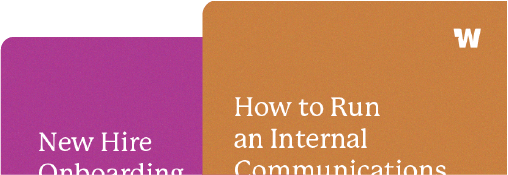How to run a brainstorming session

Your team often has to tackle unique problems without a clear solution. If your team is tasked with coming up with a new slogan for a product, there is no specific right or wrong answer, but you’ll likely have a better output when you bring a few creative folks together to help spark new and interesting ideas. Now how you get to a quality output from a brainstorming session can be tricky. If you aren’t careful, the session can go off the rails quickly. If you are running a brainstorming session, use these tips to help make sure you get the most out of your brainstorming sessions.
Have a clear purpose
First and foremost, before the meeting, make sure everyone attending knows exactly what the purpose of the meeting is. If you need to present 5 new slogan options to one of your clients, make sure everyone knows that by the end of the meeting, you want at least 5 slogans that could be presented to your client. Be specific so everyone is on the same page.
Use the “Yes, and” technique
One of the easiest ways to kill a brainstorming session is to make it feel like all your ideas are getting shot down. To help prevent this, set the ground rules upfront that you’ll try to build on people’s ideas. In improv comedy, this is called the “Yes, and” technique. By taking whatever idea or line that the other person throws out and responding with “Yes, and”, it ensures that the comedy bit or brainstorming session doesn’t fizzle out. It keeps rolling and producing more ideas and creativity.
Have a facilitator
Ensure you have one person who is keeping everything on track. This person will often be the one writing items on the whiteboard or pushing the conversation in one way or the other. By having one person who is in charge of the direction, you’ll make sure you don’t stray too far off track while still maintaining a high level of creativity.
Have attendees think of ideas ahead of time
If you’ve established a clear purpose ahead of time, the group should be able to start thinking of ideas before the meeting. A great way to make sure the entire group doesn’t fall into the trap of groupthink is to have everyone bring a handful of their own ideas to the meeting. Having a list of ideas upfront is a great way to kick off the meeting and get the ball rolling. If you pair these ideas with the “Yes, and” technique, you’ll be much more likely to come up with some creative ideas.
Limit the time of the session
Being creative can be surprisingly exhausting mentally. If you schedule a 2-hour brainstorming session, you likely won’t get a lot more output than you would out of a 30-minute session. When the group is in the conference room or on a conference call, the energy can start to run low when it runs too long. Keep your meetings to 30 mins or less. If needed, encourage the team to follow up with more ideas via email or Slack after they’ve had some more time to ruminate on all the ideas thrown around during the meeting.
The More Ideas The Better
When setting the ground rules for the brainstorming session, make sure the team knows that the quantity of ideas is the main thing you are going for in the brainstorming session. If you emphasize the quantity over quality point early on, your participants will be more likely to share their ideas that are more “out there”. You’ll obviously need to narrow down the ideas and cut out many of the items eventually, but many of the best ideas start out as outrageous ideas at first before they get polished into an idea that would be presented to a client. The brainstorming session is all about exploring every single possibility, so make sure you encourage the team to share any and all their ideas.
Send a follow-up
While most of the action will take place in the meeting, you’ll likely get some new ideas or perspectives after the participants have had time to digest everything. Make sure everyone in the meeting gets a copy of the meeting notes and ideas that were generated during the meeting after the fact. Request any final input and include clear next steps and timelines for items that came out of the meeting.
Have you run a successful brainstorming session before? What are some of your best tips for making sure the session is successful? We’d love to hear your thoughts by dropping them in the comments below.







